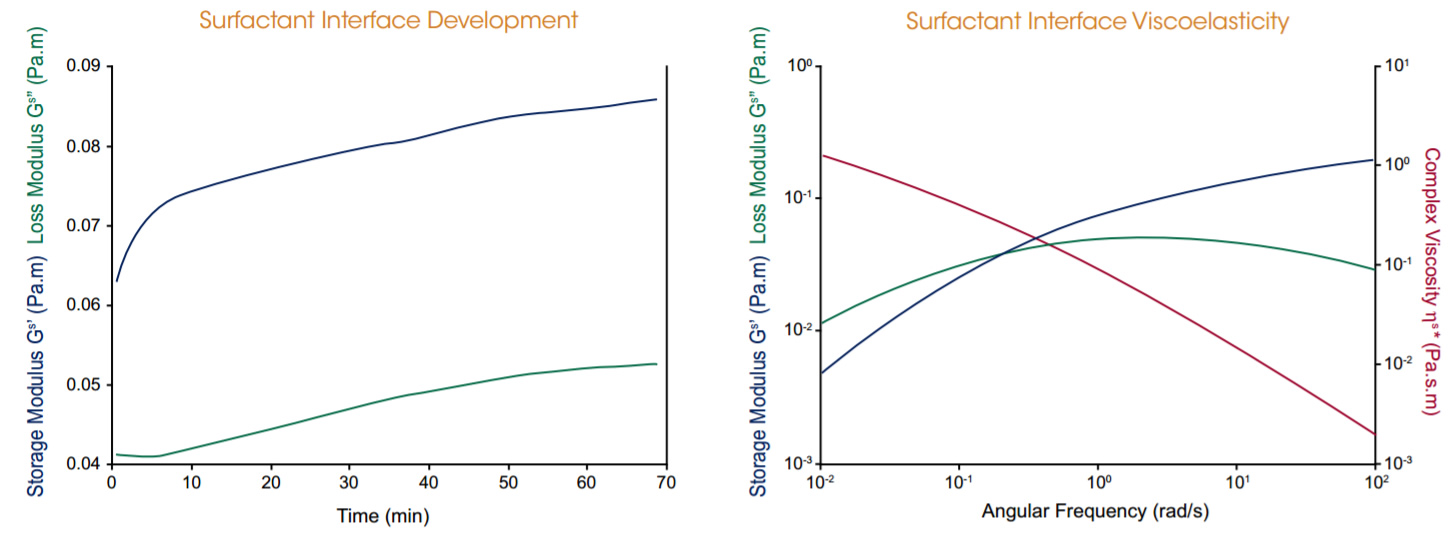
A patented system for measuring rheology and viscoelasticity of air-liquid and liquid-liquid interfaces.
Rheometers are typically used for measuring the bulk or three-dimensional material properties. However, many materials such as pharmaceuticals, foods, personal care products and coatings are often composed of liquid-liquid or gas-liquid interfaces with distinct rheological properties. In these cases, investigating the characteristics of these two-dimensional interfaces can reveal crucial information about the interfacial dynamics and structure’s contribution to the bulk material properties. The patented Double Wall Ring (DWR) system for the ARES-G2 offers a specialized geometry for quantitative interfacial viscosity and viscoelastic characterization over the widest measurement ranges.
Technology:
The ARES-G2 interfacial accessory consists of a patented Platinum-Iridium measuring ring coupled with a specially designed Delrin trough. These materials are chosen for their inert chemistry and ease of cleaning. The trough incorporates the unique double wall geometry to provide well defined interfacial shear planes on both sides of the geometry surface for increased sensitivity to monolayer viscoelastic response at liquid-air or liquid-gas interfaces.
The Double Wall Ring is capable of truly quantitative viscoelastic measurements because the interface is “pinned” to the diamond-shaped cross-section of the geometry ring. This patented ring (Patent # ) has a diameter of 60 mm and was designed for ease-of-use and maximum sensitivity. The use of the Double Wall Ring geometry facilitates surface viscosity measurements on interface viscosities as low as 10-5 Pa.s.m without complicated sub-phase corrections.Oscillation measurements are possible over the widest frequency range of any interfacial system due to the ARES-G2’s unique Separate Motor and Transducer (SMT) design that eliminates artefacts due to instrument inertia.
Interfacial properties of SPAN 65 at a water-dodecane interface

SPAN 65 is a complex surfactant with a non-linear architecture that selectively segregates to the interface between water and dodecane, forming a viscoelastic monolayer. The figures show interfacial properties of this monolayer as characterized using the ARES-G2 Double Wall Ring. The figure to the left reports the evolution of the interface formation over 70 minutes, highlighted by the steady increase in the storage modulus over this period. The viscoelastic character of the interfacial assembly is quantified in the frequency sweep data on the right. The presence of a distinct modulus crossover point at 0.2 rad/s and a dominant elastic character at higher frequencies demonstrate the strong interfacial structure. The quality of the data clearly demonstrates the unrivalled advantages of the high sensitivity, inertia-free measurements of the ARES-G2 for the viscoelastic characterization of weakly structured interfaces at frequencies as high as 100 rad/s.


